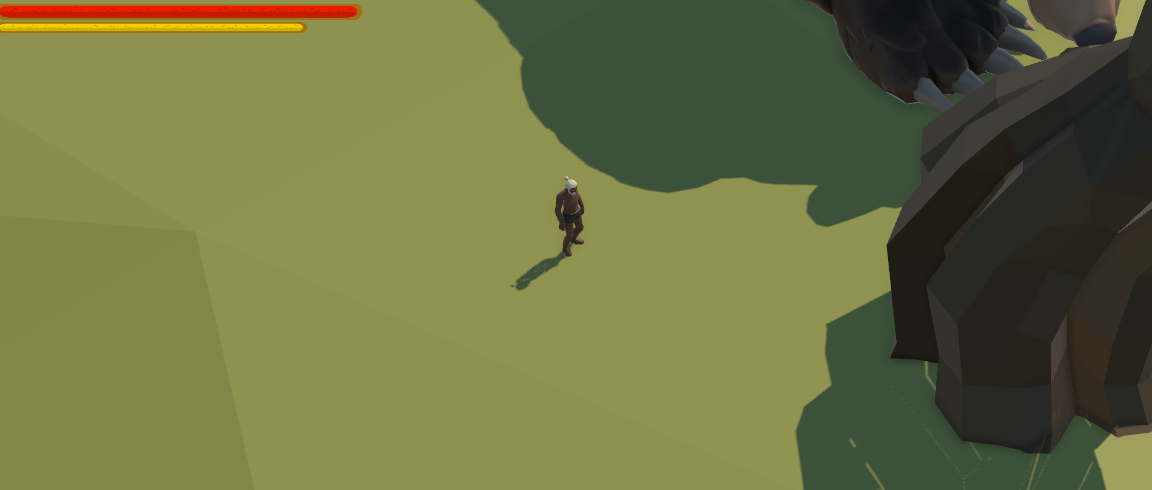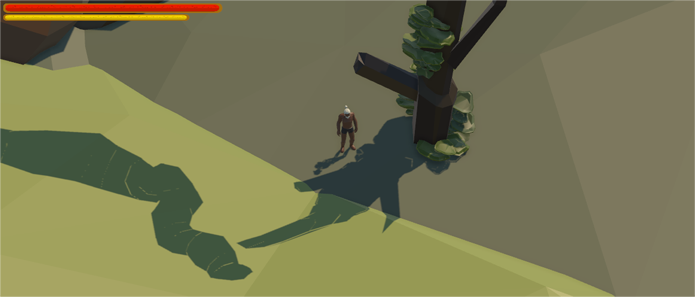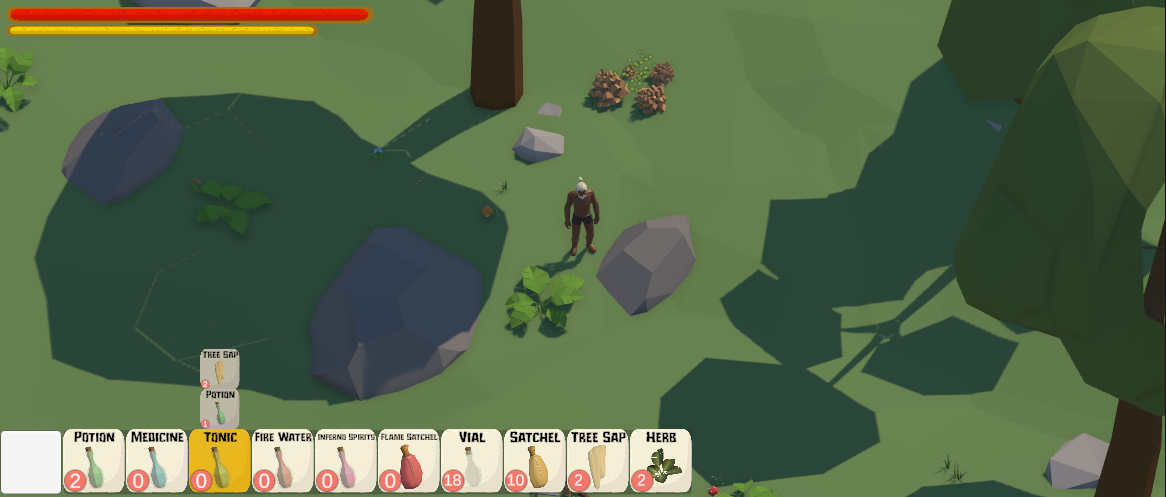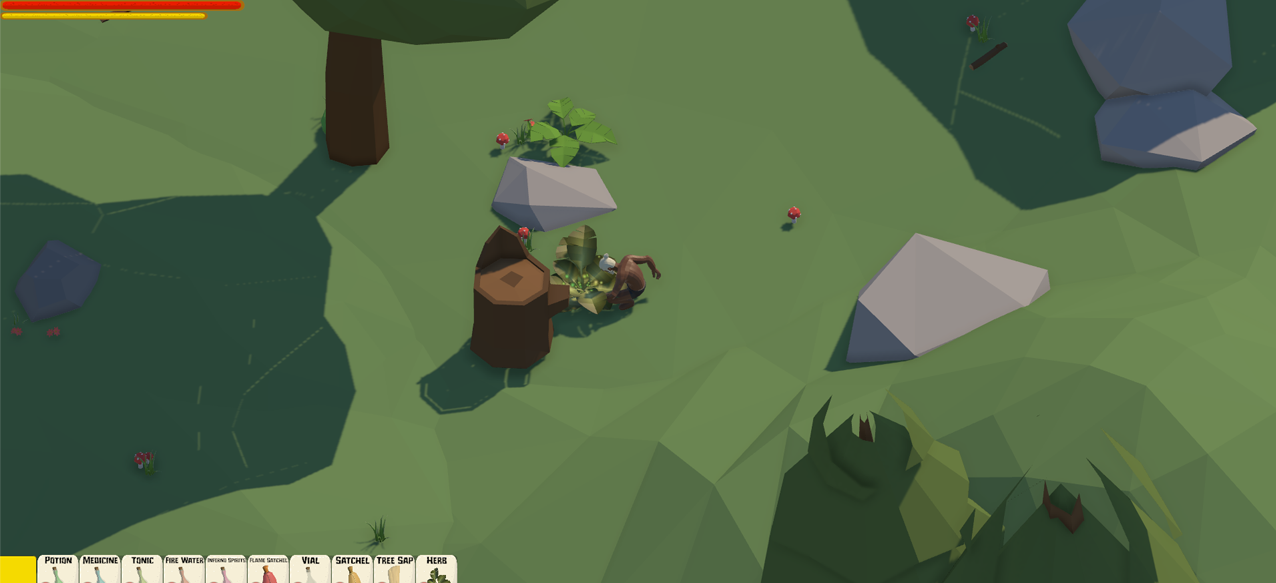
Project description
In Everywhen you hunt, track and take down larger than life creatures on your quest to prove your worth as a hunter-gatherer. Follow clues left behind by your target to unlock information on them, unlock new recipes, gather items and craft traps. Experience the thrill of the hunt!
This proof of concept prototype covers the basics of the tracking process, a currently work in progress that has extensive documentation around it and a passion to drive it forward. This build simply functions as a proof of concept, I believe this project is still very much worth showing off for the future that is planned for it.
Functioning as my breach into the Monster Hunter genre, the goal is to innovate on the genre, by bringing a new perspective into the mix, orthographic view. By putting a larger focus on using the environment around you, crafting items on the fly and using your wits, I aim to bring new playstyles to the genre.




My contribution
This project was made with the original purpose of making it part of the student projects for the Group Project course in the Howest Curriculum, where I would be the team lead for this project. Unfortunately, my project didn’t make it due to the very large amount of projects submitted, but I still very much enjoyed making it, and learned a lot from it.
- Player feedback: The main lacking point, and main takeaway during it’s development, of Everywhen at the current moment is the apparent lack of player feedback, a point which I aim to remedy first. By creating Smaller scale prototypes focusing on the mechanics, I will aim to get feedback from my peers and potential players to adjust the project accordingly!
- Documentation: My biggest passion for this project is the documentation behind it, which you can find view on the pdf in the description portion. From the GDD only, I hope to describe just how much thought I’ve given the project, and how serious I am about it. More in the Design tab.
As the solo developer on this project, I worked extensively on the Game Design Document to make it as professional as I could. Personally, I’m proud of how the document turned out, and by making it, I had a bigger overview of what I wanted to achieve. There are many facets to the project, however the current particular focus is the tracking system.
A multifaceted system that has been much more challenging to implement than I had predicted, the concept of the tracking system has gone through a lot of changes and expansions to make it more interesting. The tracking system has been broadened into four types of clues, weakness, trap, distraction and position tracks, which each relate to a correlating weakness of the target creature, revealing new recipes or facts that can help you in the hunt. Position tracks will slowly reveal the creature’s position to you, allowing you to find your target to take it down. Even the current prototype misses a clear direction of the tracking, and needs further adjustment to be able to gather player feedback, to incorporate this, the near future will include a system which systematically spawns these as the player explores.
Further innovating on the Monster Hunter genre, the goal of the isometric camera is to create a new spark in the combat system. While keeping the slow-paced, reactive style combat in which you need to learn the monsters patterns, this new point of view gives a few benefits for me as a developer and interesting new styles as a player. The isometric viewpoint allows the use of ranged weaponry to be much more interesting, as it is easy to control and feels fun to use. because of this, even melee weapons would have a significant ranged attack incorporated into their combo’s. The placing of traps in this way can also be done at range with this factor in mind. The viewpoint doesn’t take away from the tracking as it is not as much about stealth or staying out of sight of the target as classic hunting games.
Additionally, the player will be rewarded after their hunt based on their tracking progress, further incentivizing them to go through the progress. The game is meant to be easy to get into, but hard to master, given all the systems. The goal would be too have the player balance which items they want to use, or would want to craft into other items that benefit them in other ways. This way, we can introduce another skill factor into the game through the smart use of the player’s resources.
The short term goal is to create a single hunt instance, that is single player, with 1 melee and 1 ranged weapon, spanning to about 30-50 minutes of playtime, in order to create a good vertical slice to pitch to investors with. Before that, these aspects must first be further prototyped and ironed out. If you ask about this project, I’ll be more than happy to answer any questions I can, or any feedback on the GDD is more than welcome!

